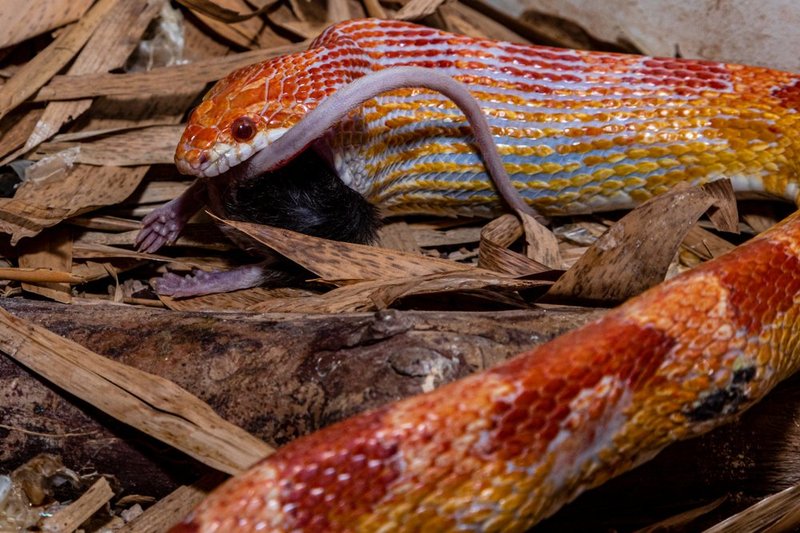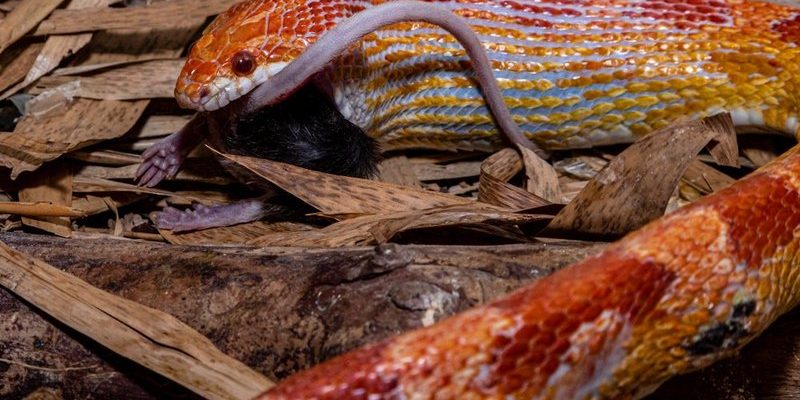
One of the most interesting things about corn snakes is how they manage to survive in various environments. From the warm, sunny fields of the southeastern United States to more rugged habitats that might not seem welcoming, corn snakes have a way of making themselves at home. Let’s dive into their incredible survival skills and explore how they navigate the challenges of their habitats.
Adapting to Different Terrains
Corn snakes are like little chameleons. They can live in a range of environments, including forests, grasslands, and even abandoned buildings. Isn’t that impressive? This adaptability is one of their strongest survival traits. Unlike some snakes that prefer specific habitats, corn snakes are versatile. They can thrive in both humid and dry conditions, which is vital for their survival.
You might be wondering how they do this. It all comes down to their physical adaptations. Corn snakes are not just beautifully patterned; their colors help them blend into their surroundings. For example, their orange and brown hues allow them to camouflage among leaves and dirt, making it harder for predators to spot them. This ability to hide is crucial for avoiding danger while also stalking their prey.
Moreover, corn snakes can adjust their behavior based on the environment. In colder climates, they might look for hibernation spots, like under logs or in rock crevices, where they can stay warm. This seasonal adaptability ensures they can survive even when temperatures drop dramatically during winter.
Feeding Strategies
You may be curious about what corn snakes eat and how they find their food in harsh conditions. These snakes primarily feed on small mammals, birds, and sometimes even eggs. What’s fascinating is their method of hunting. They use their keen sense of smell, combined with their excellent vision, to locate prey.
When corn snakes are hunting, they can be quite patient. They often lie still for long periods, waiting for the perfect moment to strike. Imagine sitting quietly in a tree, waiting for a delicious snack to wander by—that’s what a corn snake does! Once they spot their meal, they quickly constrict and swallow it whole.
Another clever thing about corn snakes is their ability to hunt in the dark. They often become more active at night when temperatures cool down, which not only gives them an advantage over their prey but also helps them avoid daytime predators. This clever nocturnal behavior is a testament to their adaptability in tough environments.
Temperature Regulation
Let’s talk about temperature—a crucial factor for any snake. Corn snakes are ectothermic, meaning they rely on their surroundings to regulate their body temperature. This can be a challenge in extreme conditions. So how do they manage it?
In hot weather, you’ll often find corn snakes hiding under rocks or in burrows to escape the heat. They know when it’s too hot to be out and about, just like we seek shade on a sunny day. In colder weather, they might bask in the sun to soak up warmth before heading back to cooler spots. They also enter a state of brumation in winter, which is similar to hibernation. During this period, their metabolism slows down, allowing them to conserve energy until it’s warm enough to venture out again.
Isn’t that fascinating? This temperature regulation is essential for their survival, allowing them to thrive in both extreme heat and cold.
Finding Shelter
Just like we need a cozy home to feel safe, corn snakes also look for places to shelter. These snakes are resourceful when it comes to finding spots to hide from predators or extreme weather. Often, they take refuge in abandoned burrows, under logs, or within rock crevices.
This ability to seek out shelter not only protects them from the elements—like heavy rain or harsh sun—but also helps them avoid predators. Think about it: if you were a small mammal looking for food, wouldn’t you want to hide in a safe spot? Corn snakes know this instinctively. Their agility allows them to slip into tight spaces where larger animals can’t follow.
During harsh weather conditions, such as storms or extreme heat waves, these shelters become vital. Imagine a rain-soaked snake searching for that perfect dry nook to curl up in. It’s all part of their clever survival strategy.
Survival Through Camouflage
You might be surprised to learn how much the right colors can help a corn snake survive. Their striking patterns aren’t just for looks; they’re like a superhero’s cloak of invisibility. The striking orange, red, and brown patterns allow them to blend seamlessly into their environment—think of how a leaf might hide in a forest.
This camouflage is particularly effective during hunting and avoiding predators. For instance, when a corn snake lies on a sun-drenched rock, it can be incredibly difficult to spot, making it a master of stealth. This not only aids in ambush hunting but also keeps them safe from animals that would see them as a meal.
Additionally, corn snakes can change their position or adjust their body to enhance their camouflage. When they coil up, the patterns can break up their outline, making them less recognizable in the wild. It’s a clever way of staying under the radar!
Social Behavior and Reproduction
When it comes to socializing, corn snakes are generally solitary creatures, but they do come together during the breeding season. You might think that harsh conditions would make romance tough, but corn snakes find a way!
During the warmer months, males will often seek out females by following pheromones released in the environment. It’s like they’re on a quest to find the perfect partner! Once they mate, females will lay eggs in safe spots—like rotting logs or leaf litter—where they can keep warm and protected.
The fascinating part? The warm nests help the eggs develop, showcasing how corn snakes utilize their environments to keep their young safe. After about 60 days, tiny corn snakes hatch, ready to start their own survival journey.
So, there you have it! The corn snake is a remarkable example of how adaptability allows a species to thrive under harsh conditions. From their clever feeding strategies to their skills in camouflage, they exhibit a resilience that’s truly impressive. Whether they’re curling up in a cozy spot during winter or blending into their surroundings to ambush prey, corn snakes prove that survival is all about making the most of their environment.
Next time you think about corn snakes—and the challenges they face—remember their incredible ability to adapt. They might not have the warm, cozy homes we do, but they sure know how to make the most out of whatever nature throws their way!

